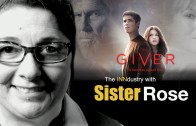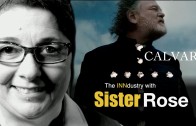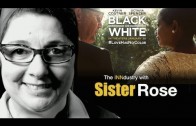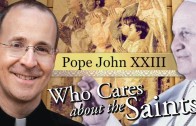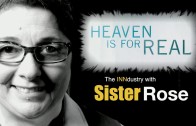'The Giver' illuminates what happens when we destroy what makes us human
The word “dystopian” has always intrigued me. The easy definition is that it means “anti-utopian,” but it sets up too facile a dichotomy because life never reaches the utopian ideal except in dreams, books and movies. If anything, dystopian means post-apocalyptic, which most often brings us into the realm of science fiction. A once acceptable world, however imperfect, has self-destructed or suffered destruction from outside forces, or a combination of the two. Whatever is left is supposedly “dystopian.”
The Giver by Lois Lowry, published in 1993, has sold 10 million copies worldwide and is HarperCollins’ top-selling children’s e-book. In 1994, the book won the prestigious Newbery Award and the Regina Medal from the Catholic Library Association, among other awards.
More importantly, The Giver has become the popular culture foundation for several series of young adult novels-into-film that in many ways tell the same story. The Hunger Games by Suzanne Collins and Divergent by Veronica Roth come to mind, although Ray Bradbury’s Fahrenheit 451 is certainly the granddaddy of them all.
In thematic terms and visual motifs, The Giver reminded me of The Handmaid’s Tale by Margaret Atwood and stand-alone films “The Truman Show,” written by Andrew Niccol and directed by Peter Weir, and “Pleasantville,” written and directed by Gary Ross. The new Lifetime television series “The Lottery” so far seems to be following similar themes.
In “The Giver,” a group of boys and girls of high school age are about to graduate and learn what their permanent jobs will be in the community.
In this society, everyone is the same, and diversity of any kind is not permitted. There is no war, no hunger, no laughter, no joy, no biological families, and no one can tell lies or ask any questions. Babies are artificially conceived and born in a Nurturing Center and then given to parents to raise. Everyone is exceedingly polite. It has been scripted this way by generations of Elders to save society from the Ruin that destroyed their civilization. A Boundary protects them from Elsewhere, a place no one is permitted to go. When people get old, or an undesirable child is born, they are sent to the lower levels to be “released,” a euphemism for euthanasia.
Jonas (Brenton Thwaites) receives his assignment last, for it is very special. The Chief Elder (Meryl Streep) tells him he is to be the Receiver, the one who will receive the community’s memories from the Giver (Jeff Bridges). Jonas will also have privileges not afforded the others. Among them, he will be able to lie.
The Giver, an elderly man, shares memories with Jonas, memories of great ethnic, religious and cultural diversity, war, love, joy, snow, sled rides — and Christmas. Jonas has grown close to Gabriel (Alexander and James Jillings), a 1-year-old baby who has been raised by Jonas’ parents (Katie Holmes and Alexander Skarsgård). When Gabriel is slated for “release,” Jonas realizes the time has come to act. With the help of former classmates Fiona (Odeya Rush) and Asher (Cameron Monaghan) and with the blessing of the Giver, Jonas takes matters into his own hands.
Although the story is not religious per se, as with most science fiction, “The Giver” is rife with themes about humanity, such as character, courage and authentic community, as well as transcendent and theological themes such as God, free will, humanity, personhood, redemption and willingness to sacrifice for others. The image of an apple is subtly juxtaposed with the society’s false paradise — utopia — throughout this small dystopian society.
If you’ve read the book, you know the ending. So all I will say is that “The Giver” could be considered a Christmas film with so much to talk about. Thoughtful and creative catechists will have a field day with this one, especially if seen through the themes of Catholic social teaching.
The theme of communal memory is central to the story, and perhaps this is where the film may seem to have the most to say. The philosopher George Santayana (1863-1952) wrote the oft-repeated warning, “Those who cannot remember the past are condemned to repeat it.” “The Giver” takes a different tack: It is through memory and stories and imagination that we rediscover our humanity and make better, free choices.
The film gets full marks for not going overboard with special effects or explicit and extreme violence. But the destruction of what it is that makes us human by the suppression of diversity, the oppression of personhood, and teaching the lie that we will be happy if we are all the same underpins the story.
Streep is cold as the Chief Elder, who lacks a caring, maternal heart even as she moves to destroy in order to preserve the utopia the elders have created. Preserving and nurturing are not the same thing. Although the film is called “The Giver,” Bridges didn’t have a lot of screen time. The scene where the baby is being prepared for “release” is the most chilling in the entire movie.
The performances by all the characters are adequate, but the story had a friend and me riveted to the screen. But then, we like movies that are actually about something.
Walden Media, known for turning popular kid-lit into films — such as “Holes,” “Ramona and Beezus” and “The Bridge to Terabithia” — teamed with the Weinstein Company to bring Lowry’s novel to life. Fans of the novel will note some slight changes, such as increasing the ages of the key characters, but essentially, the film is a faithful, and engrossing, interpretation of the book.
Dystopian novels and films work, I believe, because science fiction offers us a way to look at humanity, the choices we have made and are about to make, and consider the consequences. They allow us to go to the safe place of our moral imaginations and figure things out and to decide the kinds of citizens we want to be, and, together, collaborate to build it.
[Sr. Rose Pacatte, a member of the Daughters of St. Paul, is the director of the Pauline Center for Media Studies in Los Angeles.]
